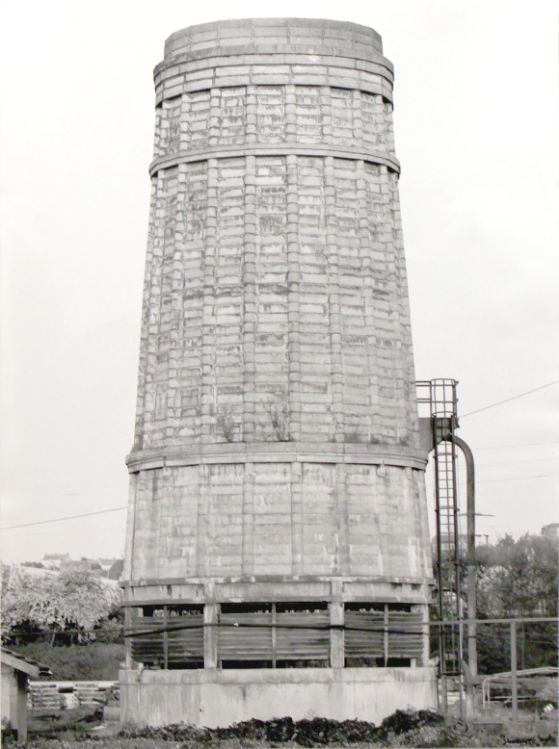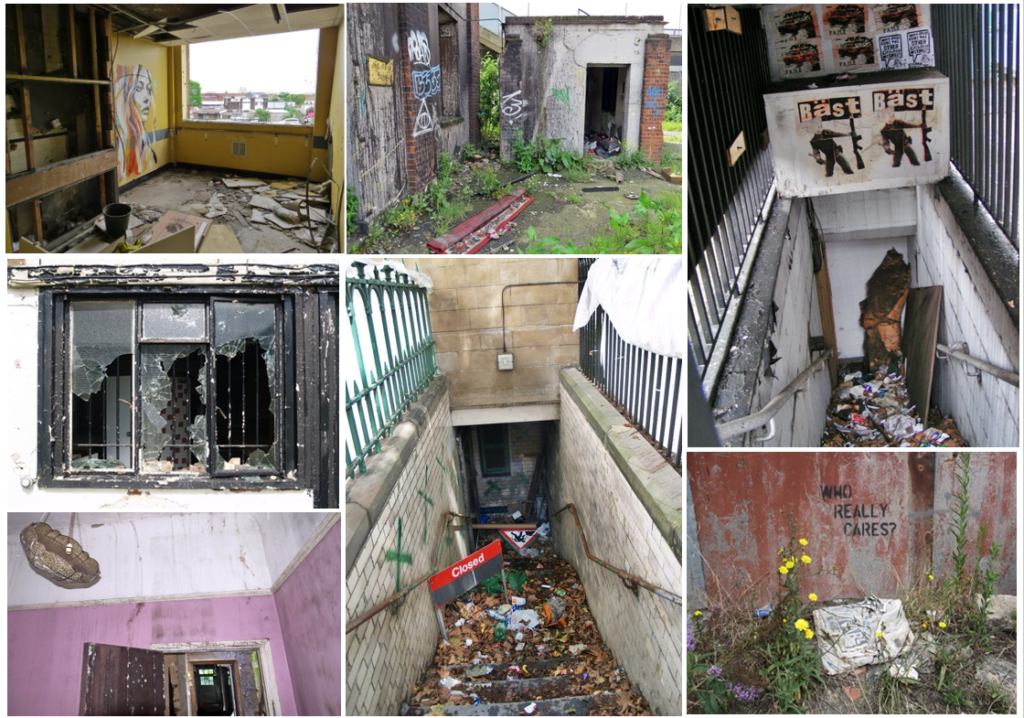
PAUL TALLING
Paul Talling is a london-based photographer who, for 19 years, has been photographing London’s derelict places and documenting it on his nationally-recognized website, Derelict London. He began taking photos in 2003, after witnessing an abandoned candle factory being demolished. This fascinated Talling and he soon developed an interest in photographing abandoned places. His objective in his images are to show the darker side of London and find the emotion in derelict areas. He later released a book about his work which went on to have good reviews from critics.
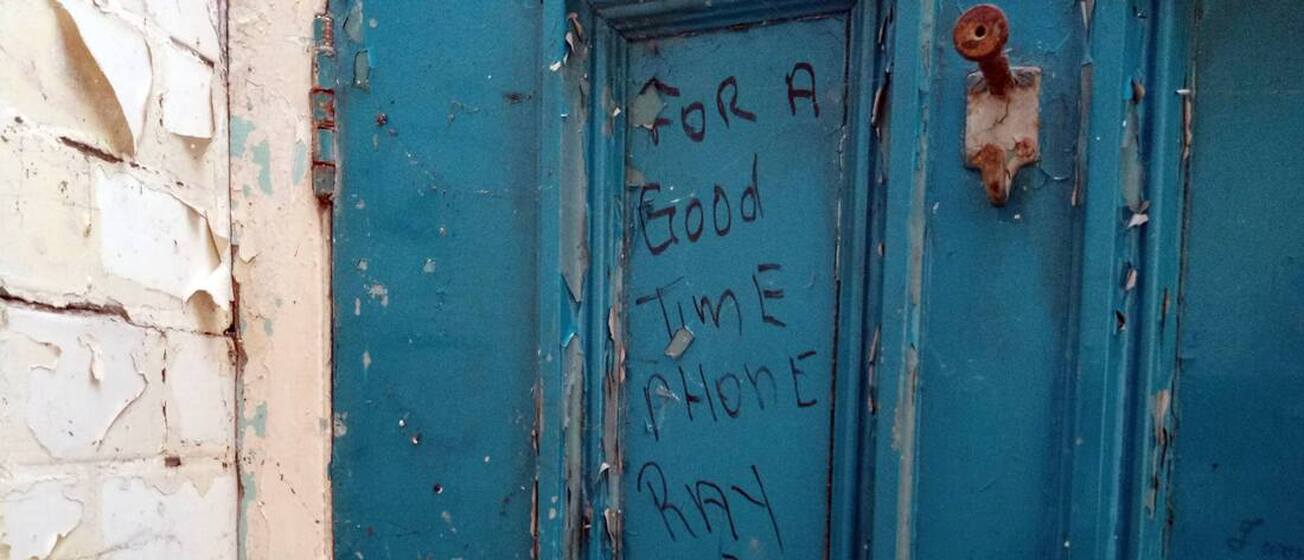
Talling includes graffiti and vandalism in his photos to capture the humour and to show the past travels people have been on whilst exploring the ghostly beauty of abandoned places. I am inspired by Talling’s work because of the stark reality of his photos – he shows the decay of buildings and doesn’t sugar coat it, in a way his photos are almost candid because he photographs exactly what meets the eye – I plan to use his method of photography whilst doing my 2nd photoshoot of abandoned places.
IMAGE ANALYSIS
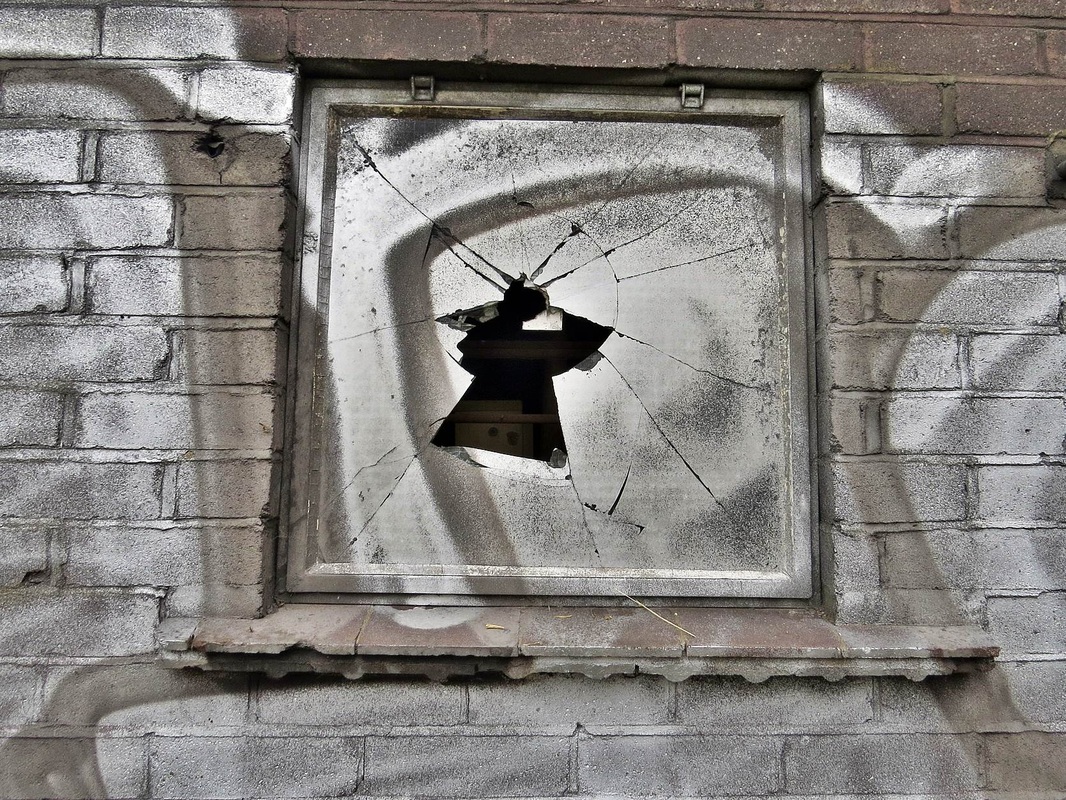
This image was taken as part of Tallings abandoned offices collection. The image appears to be of an old window which has since been covered by the graffiti as a reminder that mankind has an ever-changing impact not just on nature but on their own creation. The photo is predominantly grey with a few lighter/darker shades, but the main focus of the image is the crack in the centre of the window – not only does the colour make a sharp contrast from the other dynamics of the image, but it also sets an atmosphere and might make the viewer curious as to what’s behind the window. From a viewers perspective, the cracked window represents the peacefulness of a derelict place being destroyed by break-ins and vandalism.
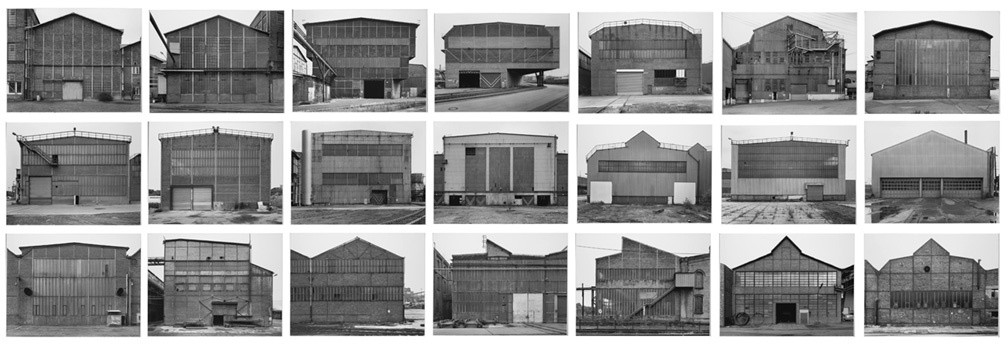
BERND AND HILLA BECHER
Hilla Becher was a German artist born in 1931 in Siegen, Germany. She was one half of a photography duo with her husband Bernd Becher. They photographed industrial structures including water towers, coal bunkers, gas tanks and factories. Their work had a documentary style as their images were always taken in black and white, and never included people or any other background ‘noise’. They exhibited their work in sets or typologies, grouping of several photographs of the same type of structure. The are well known for presenting their images in grid formations.
Their work is among the most impactful and influential of architecture photography because it spreads a message. They were often labelled as conceptual artists and influenced minimalist and conceptual artists like Ed Ruscha, Carl Andre and Douglas Huebler. As professors of The Dusseldorf School of Photography, they influenced a generation of German photographers who were their students (including Andreas Gursky, Thomas Ruff and Thomas Struth.)
Becher’s work overlooked beauty and the relationship between form and function. Both subjects addressed the effect of industry on economy and the environment, which has inspired me for my anthropocene project – I plan to photograph buildings in the same way they did, showing how the simplicity of their works have underlying meanings that show the effect industrial architecture is having on the changing environment.
IMAGE ANALYSIS

This image is called Duisburg-Bruckhausen, Ruhrgebiet, and was taken in 1999. It captures two opposites of a man-made environment in one photo – one one side, you have row after row of houses and cars, decorated with few fragile trees. However, on the other side you have big industrial power plants with toxic steam coming out of the chimney to show the dangerous effect we are having on polluting the Earth’s air and damaging the environment. The photo being in black and white furthermore shows this, the dark colours creating a bleak and chaotic atmosphere with the power plants looming over the houses below.


